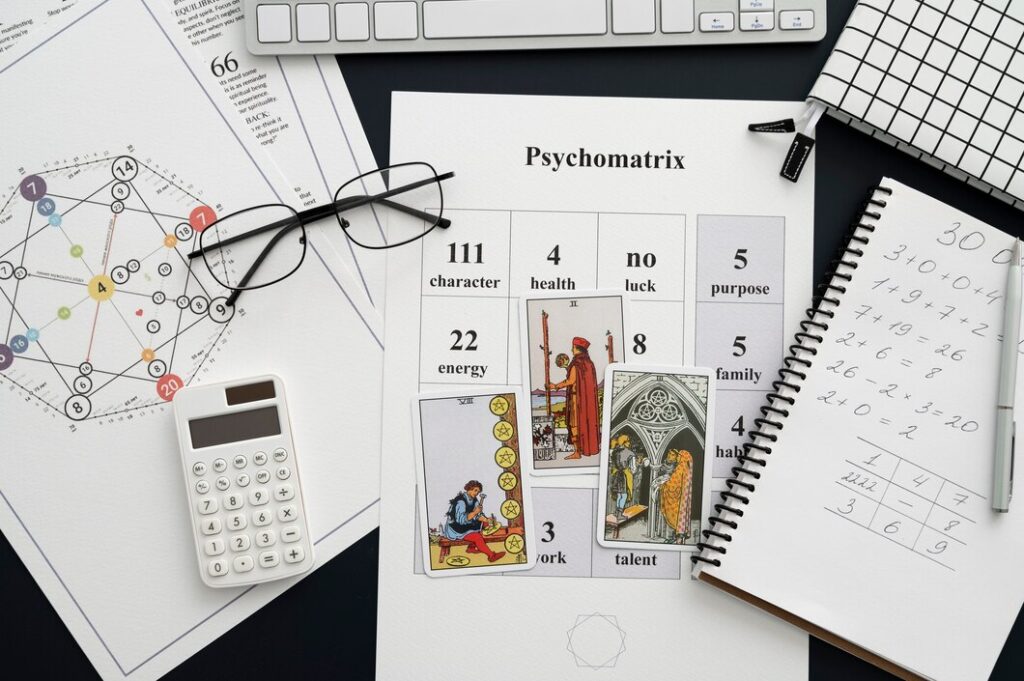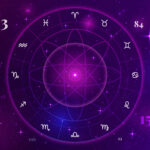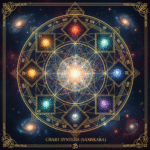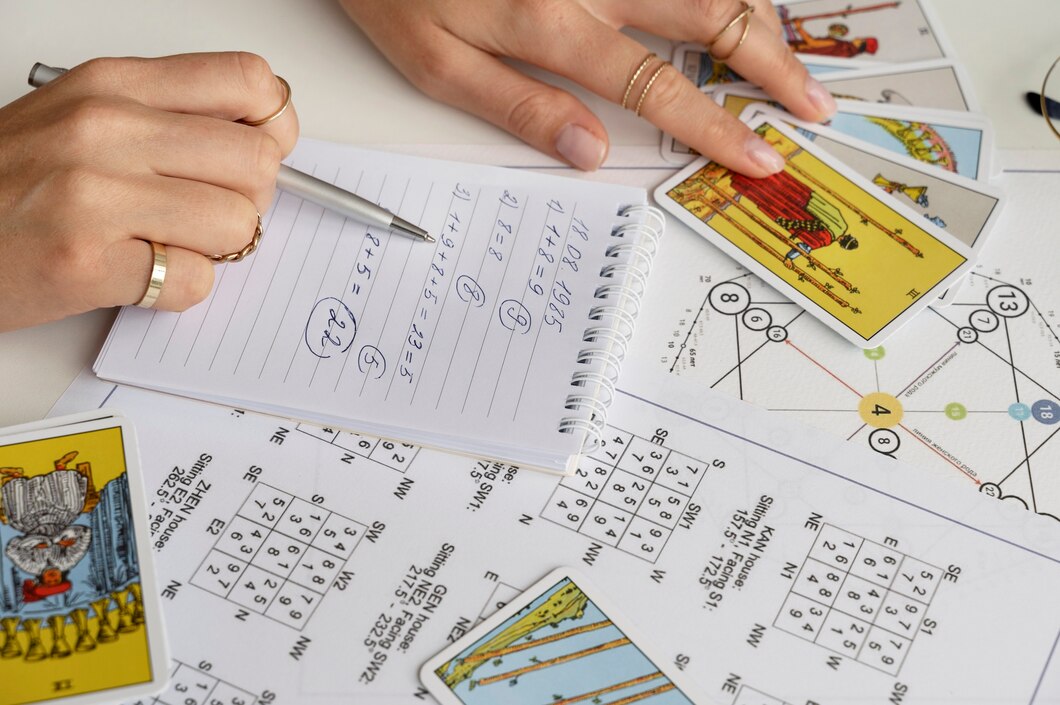You measure the year by seasons, the day by the sun, and the hour by a clock. But the ancient seers of India measured time by the moment’s quality—its potential to bring success or failure. This profound system, central to muhurta (electional astrology), is known as the Panchanga. Literally meaning “five limbs” (Pancha = five, Anga = limb), the Panchanga is the bedrock of the Vedic calendar and the precise tool used for all time calculation in Jyotish.The Panchanga Vedic system provides a daily, granular understanding of the celestial environment.
It synthesizes the positions of the Sun, the Moon, and the Earth to define the unique energetic signature of every 24-hour cycle. To understand the Panchanga is to understand the rhythmic breath of the cosmos itself, offering a blueprint for optimal cosmic alignment.

The Opinion: The Panchanga is the Master Key to Muhurta
The Panchanga—comprising Tithi, Vara, Nakshatra, Yoga, and Karana—is the absolute foundation for selecting an auspicious timing. It is the comprehensive mechanism that filters the chaotic flow of time into distinct, measurable, and predictable energetic influences.
The Reason: Synthesis of Celestial Motion
Why are these five elements so critical? Because they represent the fundamental relationships between the Sun, the Moon, and the Earth, which are the primary drivers of subtle energy on our planet.
- Tithi and Nakshatra depend entirely on the Moon’s movement relative to the Sun and the fixed stars, governing the lunar (emotional and mental) energies.
- Vara depends on the Earth’s daily rotation relative to the planetary rulers, governing the diurnal (will and action) energy.
- Yoga and Karana are finer divisions derived from the interaction of the Sun and Moon, providing detailed energetic texture to every half-day.
By synthesizing these five limbs of time, the Panchanga provides a holistic, three-dimensional view of time’s quality, allowing the astrologer to choose a moment where all forces cooperate toward the intended goal.
The Example: Beyond Just a Date
Consider choosing a wedding date. A person might simply pick a Sunday because it’s convenient (Vara strong). But if that Sunday falls on a Chaturthi Tithi (inauspicious for beginnings), an Ardra Nakshatra (associated with sorrow and effort), and within Rahu Kaal, the Muhurta would be disastrous. The Panchanga forces the consideration of all factors simultaneously, ensuring a robust, well-vetted time.
The Restatement: The Panchanga as the Cosmic Compass
Therefore, the Panchanga is not merely a Hindu calendar; it is the master cosmic compass, indispensable for navigating the waters of life. Its principles form the muhurta basics of all electional astrology.
1. Tithi (तिथी): The Lunar Day and Its Energy
The Tithi is the first and simplest limb of the Panchanga, representing the angular distance between the Sun and the Moon. Since the Moon governs the mind, emotions, and public affairs, the Tithi imparts a core psychological and environmental quality to the day.
Calculation and Structure
There are 30 Tithis in a lunar month (approximately 29.5 days). Each Tithi is completed when the longitudinal angle between the Sun and Moon changes by exactly $12^\circ$.
The Tithis are divided into two halves, or Pakshas:
- Shukla Paksha (Waxing Moon): Tithi 1 (Pratipada) to Tithi 15 (Purnima / Full Moon). The Moon is gaining light; this period is generally considered excellent for all growth-oriented, auspicious, and initiating activities.
- Krishna Paksha (Waning Moon): Tithi 1 (Pratipada to Amavasya / New Moon). The Moon is losing light; this period is better for destructive, reflective, or concluding activities (e.g., clearing debt, spiritual practice, demolition).
Energetic Qualities and Application
Tithis are further categorized as follows:
| Category | Tithis Included | Suitable Activities | Tithis to Avoid (Rikta) |
| Nanda (Joyous) | 1st, 6th, 11th | Auspicious for all festive occasions, art, music, or joyous beginnings. | — |
| Bhadra (Auspicious) | 2nd, 7th, 12th | Good for starting journeys, building relationships, and financial ventures. | — |
| Jaya (Victorious) | 3rd, 8th, 13th | Excellent for victory, conflict resolution, war, or taking charge. | — |
| Rikta (Empty/Barren) | 4th, 9th, 14th | Must be avoided for all major auspicious work (e.g., marriage, business, housewarming). Better for challenging, routine, or destructive work. | 4th, 9th, 14th |
| Purna (Full/Complete) | 5th, 10th, 15th (Full/New Moon) | Good for wealth, status, and long-lasting endeavors. However, Amavasya is universally avoided for beginnings. | Amavasya (New Moon) |
Key Muhurta Rule: Always avoid Rikta Tithis for core auspicious events.
2. Vara (वार): The Planetary Day
The Vara refers to the day of the week, with each day governed by a classical planet. This imparts a fundamental quality of planetary will and action to the entire 24-hour period.
The Planetary Rulers and Their Essence
The arrangement follows the Hora sequence (planetary hours) and reflects the influence of the seven visible planets:
| Vara (Weekday) | Ruling Planet | Core Quality / Energy | Activities Favored |
| Ravi (Sunday) | Sun | Authority, vitality, health, government. | Meeting superiors, starting health regimens, seeking promotion. |
| Soma (Monday) | Moon | Emotions, nourishment, comfort, travel (especially by water). | Dealing with the public, starting education, matters of the home. |
| Mangala (Tuesday) | Mars | Conflict, force, aggression, energy, courage. | Avoid for peace-seeking activities; good for physical labor, surgery, paying off debt. |
| Budha (Wednesday) | Mercury | Communication, intellect, business, negotiation, learning. | Signing contracts, opening businesses, studying, giving presentations. |
| Guru (Thursday) | Jupiter | Expansion, wisdom, finance, spirituality, blessings. | Consultations, religious rites, investments, starting education. |
| Shukra (Friday) | Venus | Love, harmony, luxury, arts, relationships, enjoyment. | Marriage, creative pursuits, buying clothes/jewelry, dating. |
| Shani (Saturday) | Saturn | Longevity, discipline, labor, structure, delay. | Avoid for fast action; good for starting a house construction, planting trees, meditation. |
Key Muhurta Rule: For most auspicious events (marriage, business), prefer Guru (Jupiter), Shukra (Venus), Budha (Mercury), and Soma (Moon). Strictly avoid Mangala and generally avoid Shani for ceremonies requiring speed or joy.
3. Nakshatra (नक्षत्र): The Lunar Mansion
The Nakshatra (star or lunar mansion) is the most potent and detailed of the five limbs. There are 27 Nakshatras, each spanning $13^\circ 20’$ of the zodiac, and the Moon spends approximately one day in each. The Nakshatra provides the core energetic theme and symbolic context of the moment.
Classification for Muhurta
The 27 Nakshatras are divided into seven categories based on their inherent nature. A skilled muhurta interpretation relies heavily on matching the event to the appropriate category:
| Category | Core Quality | Suitable Activities | Example Nakshatras |
| Sthira (Fixed) | Stability, Permanence, Fixedness | Marriage, laying foundation stones, planting trees, crowning a king, financial investment. | Rohini, Uttara Phalguni, Uttara Ashadha, Uttara Bhadrapada |
| Char (Movable) | Movement, Transit, Momentum | Travel, purchasing vehicles, moving house, starting employment, starting therapies. | Punarvasu, Swati, Sravana, Dhanishtha, Shatabhisha |
| Ugra/Krura (Fierce/Cruel) | Harshness, Aggression, Force | Demolition, challenging authority, surgery, setting fire, casting spells. | Bharani, Magha, Purva Phalguni, Purva Ashadha, Purva Bhadrapada |
| Kshipra (Swift/Quick) | Rapidity, Quick results, Short-term | Selling, short journeys, quick trade, giving/taking medicine, communication. | Ashwini, Hasta, Pushya |
| Mridu (Tender/Gentle) | Softness, Harmony, Delicate | Arts and crafts, music, wearing new clothes, sexual activity, leisure. | Mrigashirsha, Chitra, Anuradha, Revati |
| Tikshna (Sharp/Dreadful) | Sharpness, Cutting, Intense | Separation, magic, exorcism, cutting or destructive work, deep research. | Ardra, Ashlesha, Jyeshtha, Mula |
| Sadharna (Mixed) | Balanced, Neutral, Versatile | Routine work, clearing debts, any activity where a mixed result is tolerable. | Krittika, Vishakha |
Key Muhurta Rule: The Nakshatra must be meticulously matched to the event’s purpose. For a wedding, using a Sthira Nakshatra promotes longevity and stability; using an Ugra Nakshatra would invite conflict.
4. Yoga (योग): The Planetary Harmony
The Yoga is the fourth limb, derived from the combined longitudinal relationship of the Sun and the Moon ($S+M$). There are 27 Yogas, each spanning $13^\circ 20’$, and they primarily describe the harmonious or difficult nature of the moment.
Calculation and Role
The $27^{th}$ part of the sum of the longitudes of the Sun and Moon defines the Yoga. Yogas are typically divided into two broad categories:
- Shubha Yogas (Auspicious): Yogas like Priti (affection), Ayushman (longevity), Saubhagya (good fortune), and Siddhi (accomplishment) are highly desired and add immense strength to any Muhurta.
- Ashubha Yogas (Inauspicious): Yogas like Vyaghata (obstruction), Vaidhriti (destruction), Ganda (danger), and Parigha (barrier) are serious flaws that must be avoided, as they introduce friction, loss, or sudden calamity.
Key Muhurta Rule: The first filter of muhurta basics is eliminating the 7-9 most malefic Yogas, especially for any major life event.
5. Karana (करण): The Dynamic Impulse
The Karana is the finest division of the Panchanga. It is half of a Tithi (i.e., a $6^\circ$ change in the angular distance between the Sun and Moon). There are 11 Karanas in total.
Structure and Malefic Avoidance
The Karanas determine the dynamic impulse or kinetic quality of the moment, offering the final layer of refinement for the time calculation. They are divided into two types:
- Fixed Karana (Sthira): The 4 fixed Karanas occur once per month.
- Movable Karana (Chara): The 7 movable Karanas cycle 8 times per month.
The most critical aspect of the Karana is the one to avoid:
- Vishti Karana (Bhadra): This is the single most malefic Karana, known as the “fiery serpent’s tail.” It is said to bring adverse results and misfortune to all endeavors. Any Muhurta that falls during Bhadra must be rejected immediately, regardless of the strength of the other four limbs.
Key Muhurta Rule: Always check for and avoid the Vishti Karana, which acts as a major universal affliction.
Analyzing the Muhurta Chart: The Synthesis
Once the Panchanga calculation yields a generally favorable time window, the focus shifts to the Ascendant (Lagna) and planetary placements to create the final Muhurta chart. This is the muhurta interpretation phase, where the five limbs of time are verified against the specific needs of the event and the individual.
Step 6: The Ascendant (Lagna) and Lagnesh
The Lagna must be a sign that aligns with the event’s purpose (Fixed for marriage, Dual for business). The Lagnesh (Lord of the Ascendant) must be free from affliction (not in the 6th, 8th, or 12th house, not debilitated or combust) and ideally occupy an auspicious house (Kendra or Trikona). The Lagna itself must be free from malefics (Mars, Saturn, Sun, Rahu/Ketu).
Step 7: Tarabala and Chandrabala (Individual Suitability)
The Muhurta must be verified against the native’s birth chart.
- Chandrabala (Moon’s Strength): The Moon in the Muhurta chart must not be in the 4th, 8th, or 12th house from the native’s natal Moon sign. A weak Moon means emotional distress for the native during the event.
- Tarabala (Star Strength): The Muhurta Nakshatra must be a propitious one (e.g., Sampat, Kshema, Sadhana) counted from the native’s birth Nakshatra.
Step 8: Planetary Placements and Malefic Elimination
The final check involves strategically placing benefics and confining malefics:
- Benefic Placement: Jupiter and Venus must be strong, ideally occupying the 1st, 4th, 5th, 7th, 9th, or 10th houses. Jupiter in a Kendra is particularly powerful.
- Malefic Confinement: Saturn, Mars, and Rahu/Ketu should be relegated to the 3rd, 6th, or 11th houses, where they give favorable results related to courage, victory over enemies, and gains.
- The Crucial Avoidance: Malefics in the 7th house (partnership), 8th house (longevity/crises), and 12th house (loss/expenditure) are the final deal-breakers in a professional electional chart reading.
Conclusion: The Wisdom of Cosmic Flow
The Panchanga is far more than a simple calendar; it is a time-tested technology for understanding and applying the universal law of rhythm. By meticulously calculating and honoring the five limbs of time, we are not seeking to alter destiny, but rather to synchronize our human will with the flow of cosmic energy. Every successful venture, every enduring marriage, and every powerful beginning, when timed correctly, is a testament to the elegant, predictive power of the Panchanga Vedic system.
This ancient, systematic approach to time calculation empowers us to move from reacting to life’s circumstances to actively designing the foundational conditions for our success. By heeding the quality of the moment, we grant our efforts the ultimate celestial blessing, ensuring that our seeds of endeavor are planted in the most fertile soil, under the most auspicious sky.











